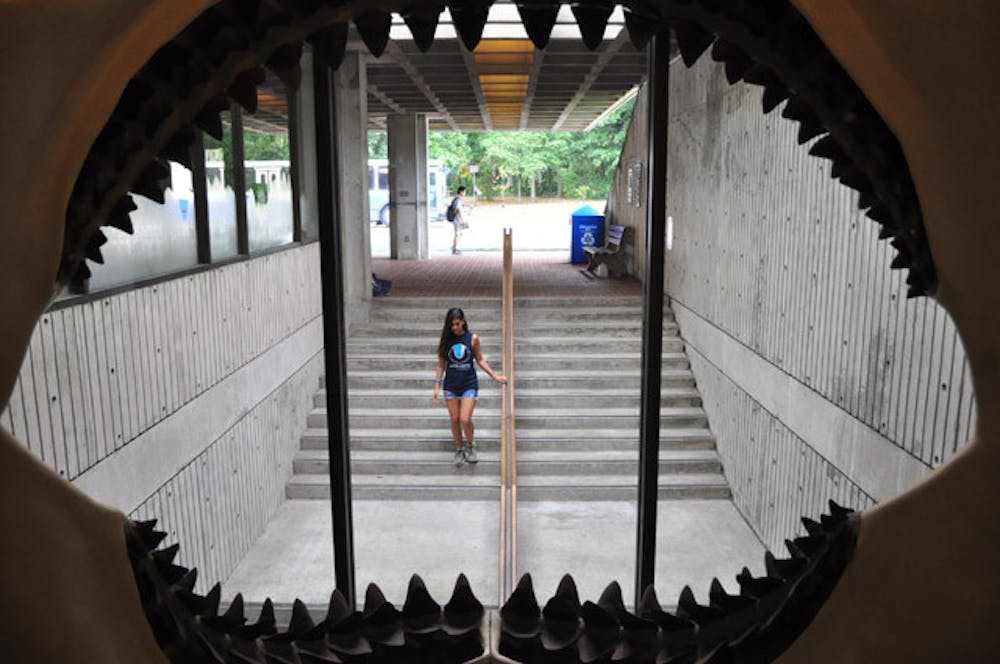Millions of years ago, 50-foot sharks swam, hunted and killed, and one UF student believes he has the tooth to prove it.
Steven Pensabene, a 23-year-old UF agriculture operations management junior, found a 5-inch tooth in the sandy soil of a Gainesville creek.
Although the serrated tooth is big enough to fill Pensabene’s palm, it is split down the center — the other half still undiscovered. Pensabene has been searching for shark teeth since he was 3 years old.
Pensabene and other shark fanatics are stoked for all of the Megalodon developments at UF.
Last Wednesday, UF released a study proving the Megalodon species became extinct 2.6 million years ago, disproving the idea the sharks might still be alive.
Lead research author Catalina Pimiento collaborated with Christopher Clements from the University of Zurich for the study. Their findings provided insight on Megalodon’s past.
“The extinction of modern sharks is very worrying,” Pimiento said. “They maintain the stability of marine ecosystems. Their extinction can negatively affect entire food webs.”
The researchers used data from recent Megalodon records to calculate the shark’s extinction date.
The Florida Museum of Natural History is working to fight shark extinction.
Its exhibit “Megalodon: Largest Shark that Ever Lived” was created in 2008 and became so popular the Florida Museum took it on tour across the country.
Katina Prokos, marketing assistant for the Florida Museum, said there were numerous requests from museumgoers to bring the exhibit back to Gainesville.
“People have a fascination — maybe a morbid curiosity — because of movies like ‘Jaws’ and shows like ‘Shark Week,’” Prokos said. “We want to educate as well as inspire because sharks are currently in population decline.”
Prokos said the decline is caused by overfishing and climate change. A heavy focus on shark conservation is new to the exhibit.
According to the Florida Museum, a 60-foot Megalodon could have weighed up to 77 tons.
At the exhibit, which will run until Jan. 4, visitors can touch Megalodon teeth and view fossils from Panama.
The event is free to UF students with a valid Gator 1 Card.
Pensabene said he plans to visit the exhibit to learn more about some of the shark teeth he has collected over the years, including his newest 5-inch addition.






